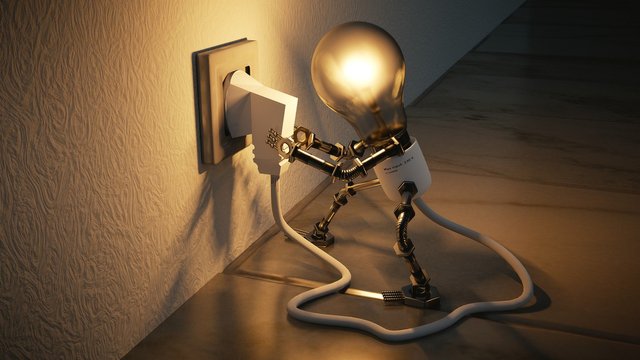Heat-to-Electricity Transformation Record Broken!
A layer of iron, vanadium, wolfram, and aluminum that is on a silica crystal works as an incredible thermoelectric generator.

Image by Colin Behrens from Pixabay
- Be also sure to check out my other posts and follow me @kralizec and subscribe to my Youtube channel at Kralizec Gaming Youtube Channel
Thermoelectric materials are capable of an incredible thing. They can make electricity from heat thanks to the Peltier-Seebeck effect. This takes place when areas with different temperatures are on a thermoelectric material. The temperature difference leads to the creation of electric voltage and the flow of electricity.
The amount of electricity that can be “mined” out of the temperature difference is known as ZT. The higher the ZT of a given material the better its thermoelectric properties are. So far, the best known thermoelectric materials had a ZT of 2.5 to 2.8. Now Ernst Bauer from the Technische Universitat Wien (TU Wien) and his colleagues developed a completely new material with a ZT somewhere between 5 and 6. It is a silica crystal with a thin layer of iron, vanadium, wolfram, and aluminum.
The material from Wien is so incredibly effective at transforming heat to electricity that it could easily get electricity for sensors or even small computer processing units (CPUs). That would mean that we no longer need to connect them to sources of electricity but they could run purely of the difference in temperatures that the thermoelectric material produces.
As Bauer mentions, an effective thermoelectric material has to do two essential things that are hard to fulfill at the same time. On one hand, it has to conduct electricity very well but it also has to conduct heat as badly as possible. The problem is that heat and electric conductive are typically quite connected. Bauer's laboratory has been studying thermoelectric materials for many different applications for a while now. The result is the new material with truly incredible properties.
Iron, vanadium, wolfram, and aluminum create a nice regular crystal lattice. When such a layer is placed on a silica crystal it radically changed both its crystal and electronic structure that becomes a mixture of regular and irregular arranged parts. This leads to the material being very conducive to electricity while reducing its heat conductivity.
What we should understand is that such a small layer of the material will not produce a large amount of electricity. On the other hand, it can be easily be used for many different applications. The most obvious seems to be anything related to the Internet of Things (IoT). These will use many sensors and most of them incredibly small that may not even be chargeable with regular means.
Sources:
- If you like the content I’m producing about science maybe you will like the content I produce about gaming as well! Be sure to check out my other posts!
i have upvoted this post , please upvote my post,
Hello,
Your post has been manually curated by a @stem.curate curator.
We are dedicated to supporting great content, like yours on the STEMGeeks tribe.
Please join us on discord.